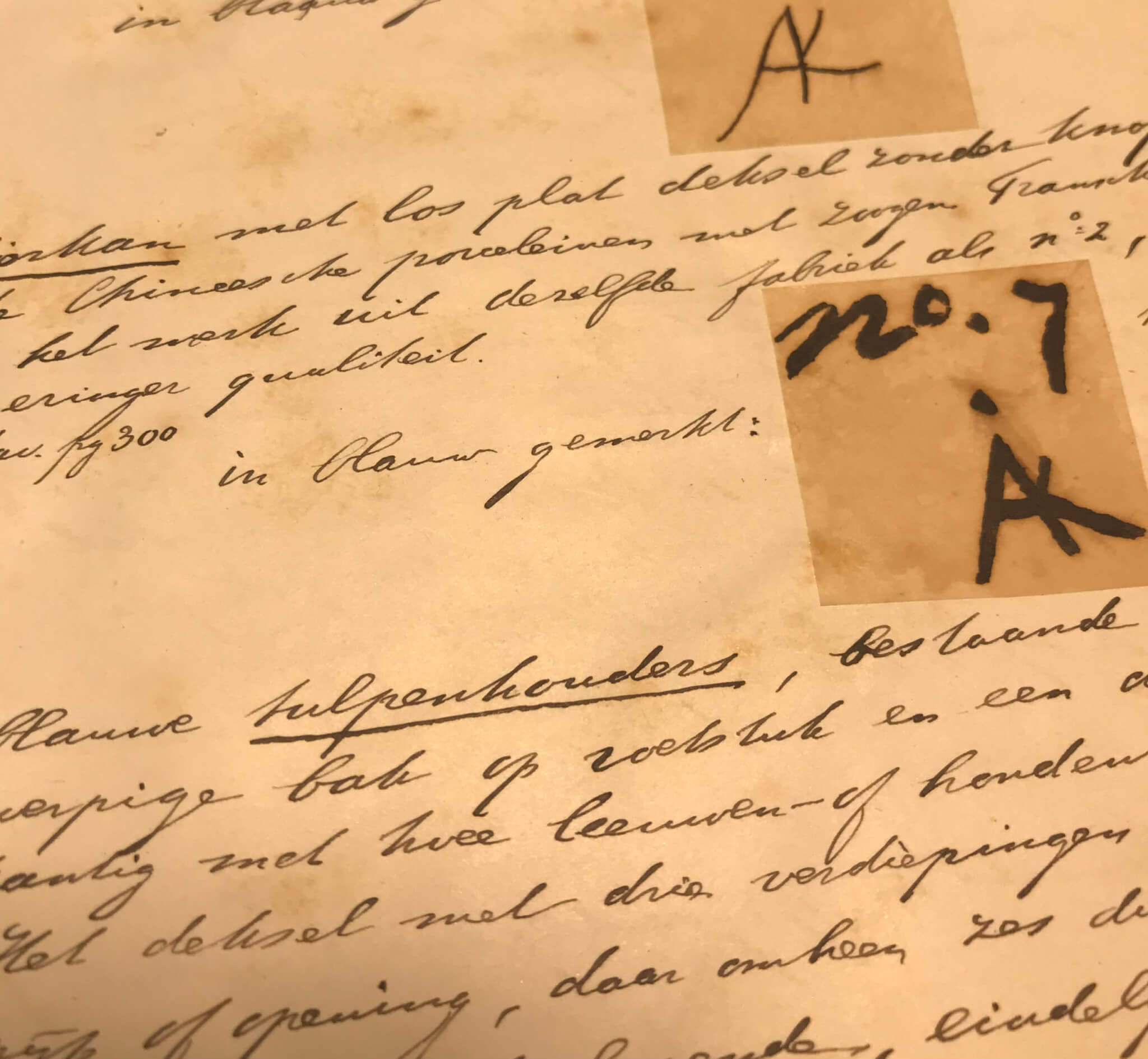
The Collection of A.H.H. Van der Burgh
At the end of the nineteenth century, there were very few pieces of Dutch Delftware in museum collections. The most important collections of Delftware objects, both in quantity and in quality, were assembled by private collectors. One of these important private collectors was John F. Loudon, whose collection of approximately 500 objects was donated to the Rijksmuseum in Amsterdam in 1916. Another important collector of Delftware at the end of the nineteenth century was Mr. A.H.H. van der Burgh (1845 – 1904), whose collection was the first Delftware collection that was included in a Dutch museum collection.
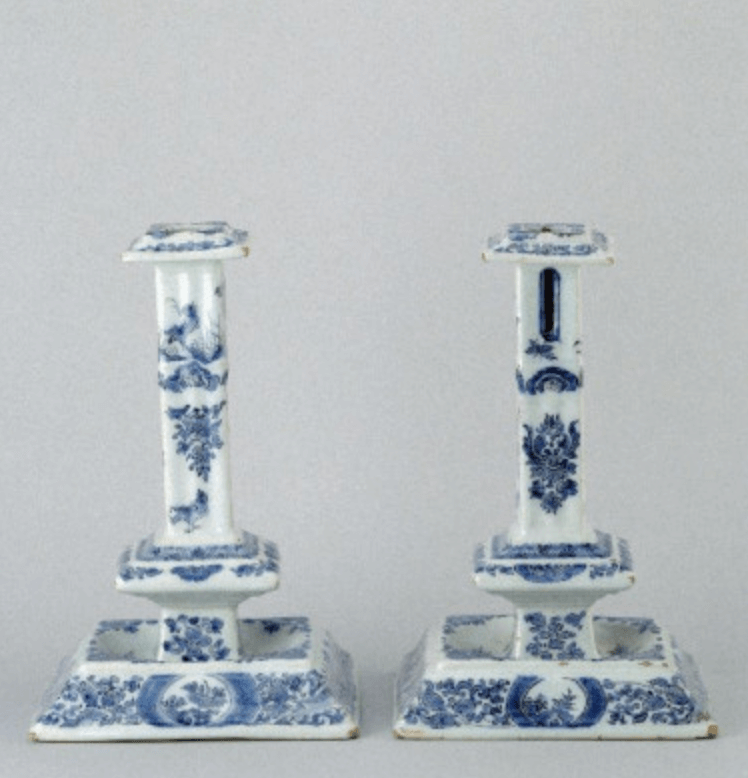
Van der Burgh was part of a group of collectors who in the second half of the nineteenth century focused on bringing together a large collection of Delftware. Their interest in Delft faience was aligned with the general interest in the Dutch historical past. At the same time, there was a greater scientific interest in developing a systematic research approach to the history of Delftware, with Henri Havard’s fundamental study on this subject that was published in 1878.1
Van der Burgh was unmarried and lived on the Parkstraat in The Hague, not far from Loudon. Therefore, it is possible that the two collectors knew each other and each other’s collections. Van der Burgh, who was an archival researcher of notarial protocols, not only collected Delftware, but also had a great interest in the history of Delft. He researched the Delft potters and went through the notarial archive of Delft.2 His years of research have yielded an abundance of data that for the first time have substantially uncovered the original sources. This large amount of archival data about Delft potters and factories came into the possession of the Municipal Archive in Delft.3
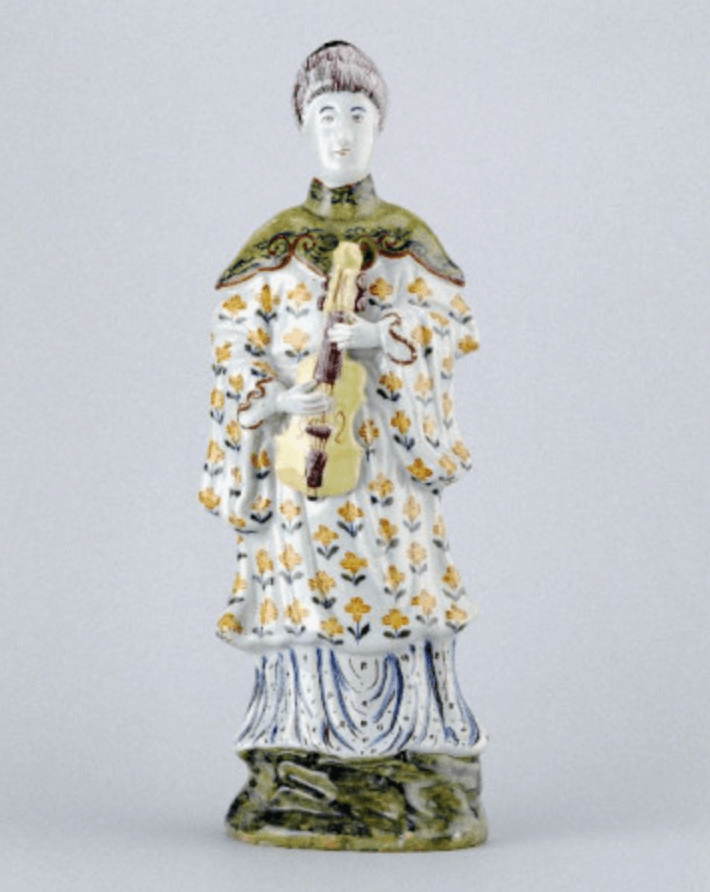
Although Van der Burgh may have known of Loudon’s collection, he was probably more inspired by an exhibition on Delftware from 1883, the Internationale Koloniale en Uitvoerhandel Tentoonstelling (International Colonial and Export Exhibition – a type of World’s Fair). The exhibition was held in an unused area of land (nowadays the Museumplein) behind the Rijksmuseum, which at that time was still under construction. The building contained pavilions representing 28 different nations, including France, Germany, the United Kingdom, Belgium, Japan, the United States, China, Canada, the Ottoman Empire, Siam (Thailand), Transvaal, and the host country, the Netherlands. The Netherlands’ section was devoted to the old-Dutch crafts. For example, in the tradition of late nineteenth-century presentation, a number of period rooms were on view, including an arrangement of Delftware.4
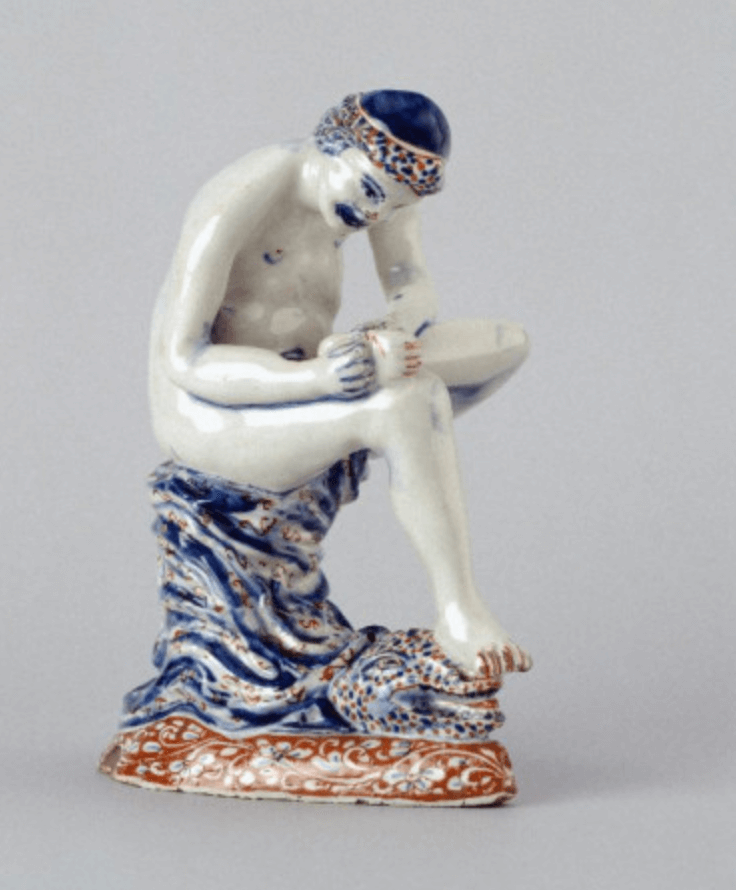
Van der Burgh visited the popular exhibition that attracted over a million international guests. Based on his notes, Van der Burgh was particularly interested in the collection of Delftware that was exhibited in gallery XI of the exhibition Retrospectieve Kunst (Retrospective Art ). His notes further mention two collectors whose Delftware objects were exhibited: Mr. J.L.H.A. baron Gericke van Herwijnen and a certain De Ram from the southern Dutch city Bergen op Zoom. Especially of the latter collector, Van der Burgh lists a large number of objects, which would later be acquired by him. Van der Burgh also acquired a blue and white plaque from the collection of Gericke van Herwijnenhe that he saw at the 1883 exhibition.5
Following the exhibition, Van der Burgh purchased objects from the collection of A.J.L. baron van den Bogaerde from auction in 1900. The origins of other objects in his collection remain unknown.6
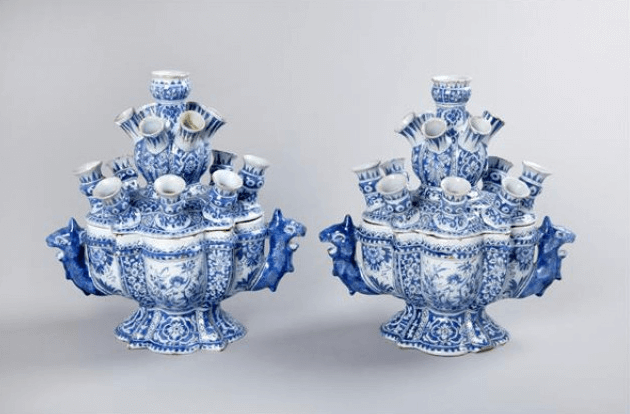
Van der Burgh’s archival interest in the entire history of Delft factories can also be seen in his Delftware collection. He assembled a varied collection of objects which range from the late seventeenth century to the end of the eighteenth century. More than 100 marked objects from approximately fifteen different factories are part of his collection. Some highlights include a black Delftware tea canister marked for Lambertus van Eenhoorn of De Metaale Pot (The Metal Pot) factory and a pair of blue and white bowl and cover flower vases marked for Adrianus Kocx of De Grieksche A (The Greek A) factory. This pair of flower vases was one of the objects on loan by this certain De Ram to the exhibition in 1883. Based on his notes, Van der Burgh had seen the vases, and later acquired them together with several other objects, such as a model of a boy with thorn marked for Lambertus van Eenhoorn. When Van der Burgh passed away in 1904 his collection counted no less than 530 pieces of Delftware.
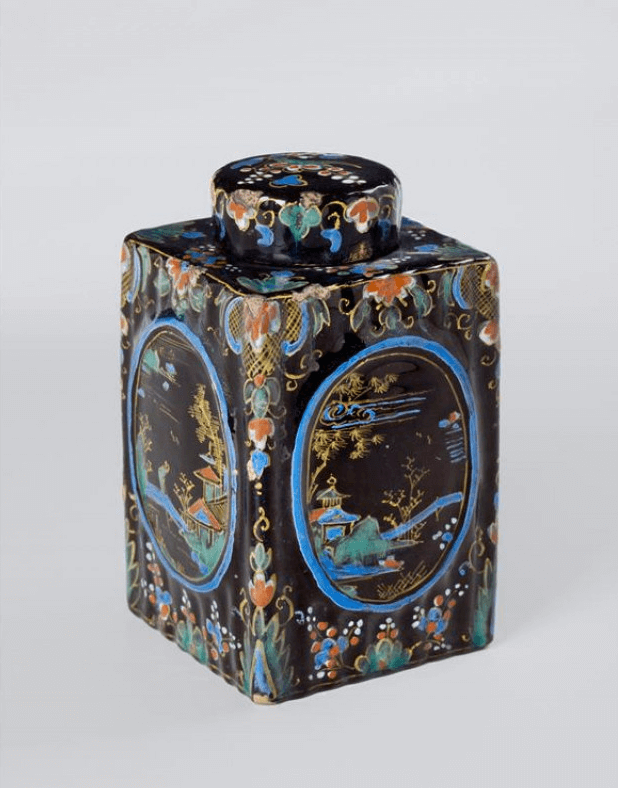
Van der Burgh’s brother, P.J., was an instrumental force behind the decision to leave the collection to the municipality of The Hague after his death. His brother was a member of the Gemeentemuseum’s (municipal museum) management committee for some time. Although the Van der Burgh collection is now considered one of the most important collections of Delftware, the decision to accept the bequest was not taken lightly. The director of the Gemeentemuseum, A.J. Servaas van Rooijen opposed the bequest because he thought that a collection of Delftware did not belong in a museum in The Hague. However, an entire advisory committee (commissie van beheer) of the museum persuaded Servaas van Rooijen to accept this important collection of Delftware. The members of this committee unanimously believed that this was a unique opportunity to acquire a collection that was not only of local, but also of national and even international significance. They pointed out that people abroad were often surprised that the renowned Delft was so poorly represented in Dutch public collections. As it has already become clear from the above, the collection policy of Delftware in Dutch museums was indeed poor. Therefore, the Van der Burgh collection represents an important contribution not only for the Gemeentemuseum The Hague, but for the entire Netherlands.7
The addition of the Van der Burgh collection to the Gemeentemuseum marked a decisive moment for the history of the collection of Applied Arts. Before the collection entered the museum, the institution was merely a local antiquity room that displayed historical objects related to The Hague. However, during Dr. H.E. van Gelder’s directorate (1912-1941), the museum was transformed into an institution of national importance, a status that was definitively achieved in 1935 when the museum moved into the building designed by H.P. Berlage. Van Gelder developed a consistent collection policy that was based on the Delftware collection of Van der Burgh.8
1 M.S. van Aken-Fehmers, L.A. Schledorn, A.-G.Hesselink, T.M. Eliëns, Delfts aardewerk. Geschiedenis van een nationaal product, Volume I, Zwolle / Den Haag (Gemeentemuseum) 1999, p. 10
2 L. Schledorn, ‘Delftse plateelbakkers in het Lucasgilde’ in Holland: regionaal-historisch tijdschrift, vol. 36 (2004), afl. 2, p. 83-96
3 Van Aken-Fehmers 1999 (note 1), p. 10
4 Van Aken-Fehmers 1999 (note 1), p. 9
5 Van Aken-Fehmers 1999 (note 1), p. 9
6 Van Aken-Fehmers 1999 (note 1), p. 9
7 Van Aken-Fehmers 1999 (note 1), p. 10
8 Van Aken-Fehmers 1999 (note 1), p. 10



